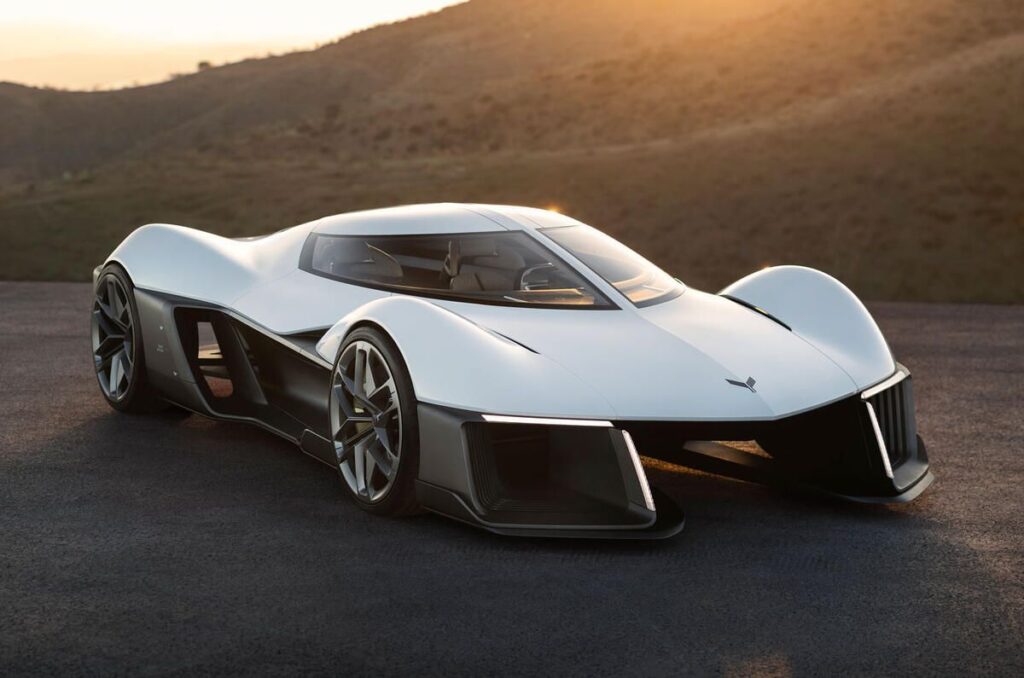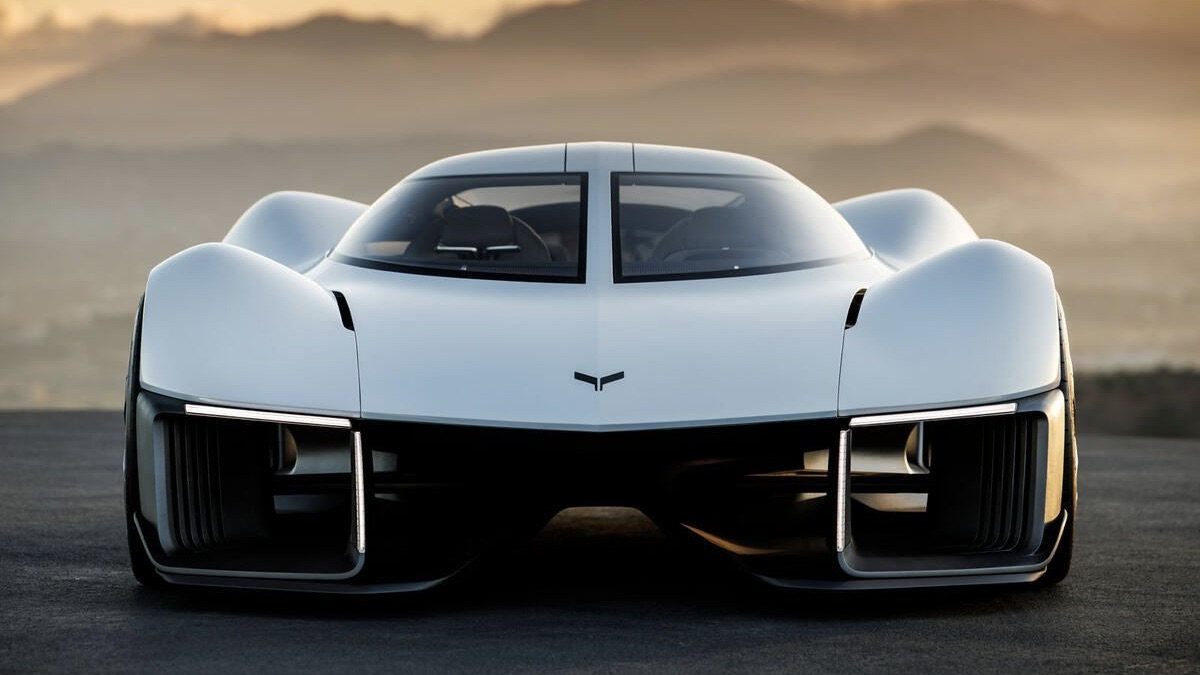General Motors has pulled the wraps off the first of three bold new Corvette concepts for 2025—and this one isn’t American-born. Designed in Leamington Spa, England, by GM’s new British Advanced Design Studio, the concept offers a striking glimpse into what the future of the Corvette could look like, even if it’s not destined for production.
The car is part of a wider Corvette Creative Study that tasks different design studios with reimagining the American icon. It’s the first of three concepts, with the second coming from GM’s Los Angeles studio and the final one, due this summer, originating in Detroit. That third model is expected to blend elements from the other two, offering a more realistic preview of what the ninth-generation Corvette (C9) could eventually become.
Sleeker, more elegant, and far more aerodynamic than the current C8, the British concept leans heavily into hypercar territory. While technically electric, the concept isn’t a declaration of a battery-only Corvette future. The electric platform simply gave designers greater freedom to experiment with form and airflow, including a perfectly flat underbody and aggressive air channeling through the bodywork.
Visually, the car makes a statement. Its silhouette is that of a classic mid-engine supercar, with the body divided into two distinct zones: a smooth, fluid top half and a more complex, function-driven lower section. The underbody is even 3D-printed from recycled tyres, underscoring the experimental and sustainable nature of the project.
The front end is dramatic, with vast air intakes and a low, catamaran-style nose. Protruding wheel arches and bodywork that clings to the structure give the car a muscular yet sculptural look, reminiscent of the Aston Martin Valkyrie. At the rear, there are built-in fans to manage drag, and in Track mode, dorsal fins emerge to enhance downforce—offering both visual drama and racing-grade aerodynamics.

Corvette DNA remains intact despite the futuristic styling. A central spine runs the length of the car, splitting both the rear and front windscreens in a nod to the original 1963 Sting Ray. This design eliminates the need for side pillars and supports a pair of vast gull-wing doors, which open by pivoting along that central axis.
This concept is the first major project from the British studio and serves as a creative test for GM’s global design network. While development of future Corvettes will still be led in the United States, the decision to hand a Corvette brief to a UK team has paid off with a fresh, daring interpretation of the brand’s legacy.
With the next concepts on the way from LA and Detroit, expectations are building. If this is the baseline, the next generation of Corvette could be more exciting—and more international—than ever before. For now, fans of the V8 can breathe easy. The internal combustion engine isn’t going anywhere just yet.
